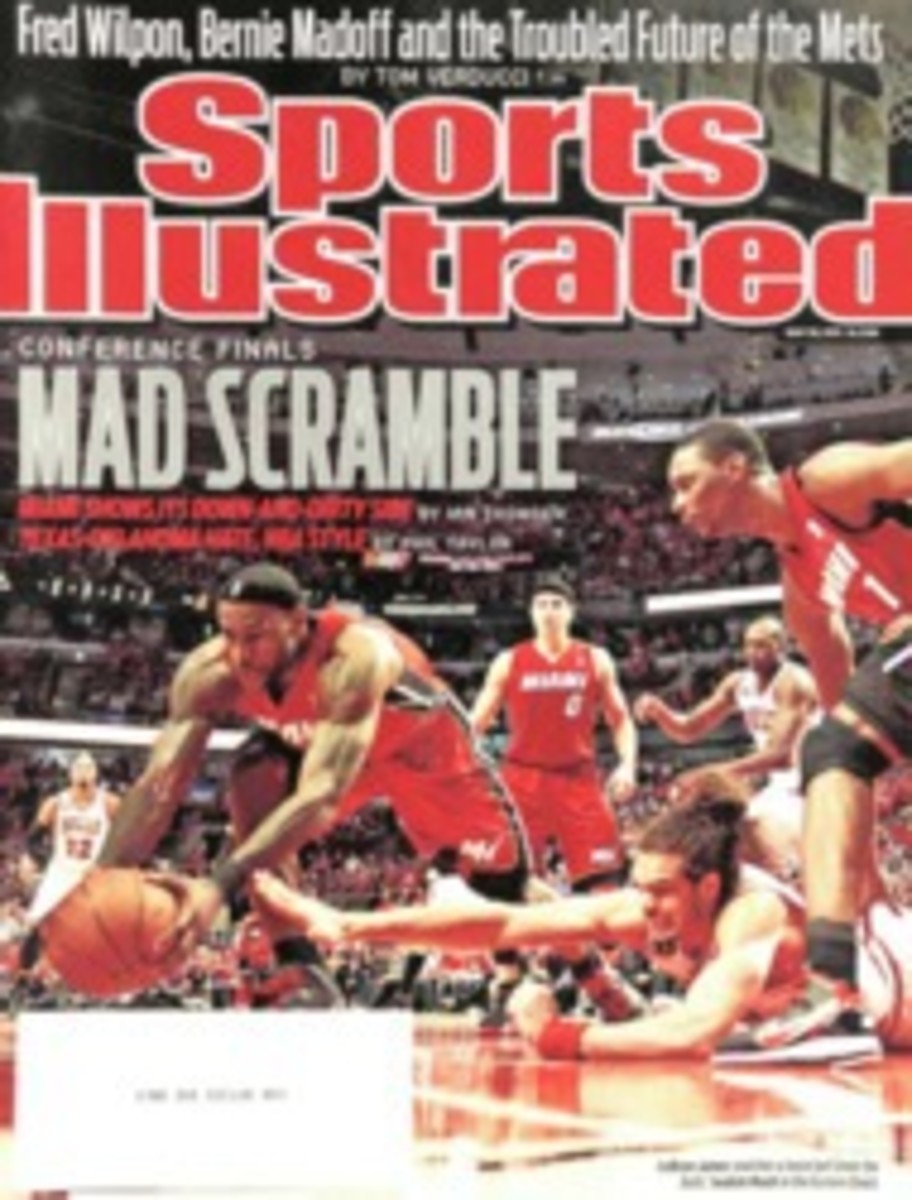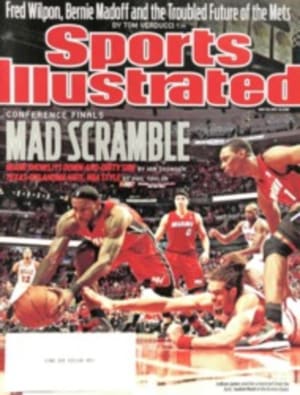
Too Much Information?
Born, like so many great ideas, during a traffic jam on I-84 near Waterbury, Conn., ESPN has grown over three decades from a lampoonable curiosity (Australian rules football and slo-pitch softball) into the world's most powerful and best-known sports broadcast entity, its production values high, its capacity for self-reference and self-reverence even higher. If ESPN didn't create the culture of celebrity sports journalism—Howard Cosell was pretty famous back in the day—it expanded it and branded it to the point that ESPN's pretty faces land endorsement deals with Reebok and Nike, and even its not-so-pretty faces get Applebee's and Nutrisystem.
But ESPN, despite its we-are-the-world preening, has always been a damn good news-gathering enterprise. It has grown as steadily as the leagues it covers and is now an institution itself, providing the daily sports oxygen for an across-the-generations fan base that wakes up to SportsCenter and beds down with an ESPN game from the West Coast. So it's understandable that the just-released oral history of ESPN clocks in at 745 pages and required two guys to write it, James Andrew Miller and Tom Shales, the latter of whom once won a Pulitzer at The Washington Post.
If you've been checking out excerpts from Those Guys Have All The Fun on the blogosphere, you might think it's a book about the adult film industry, heavy on ribald tales of sex and drugs. (And it did require all my powers of restraint not to begin this piece with the passage in which America's Cup skipper Dennis Conner mentions his on-board bedroom, his wife, screaming and an ESPN camera crew.) But that's a small part of those 745 pages.
The book does raise the question, though, of how much is fair to cover about the private lives of people who bring us the news. By creating its own celebrity universe, ESPN has certainly moved the chains. Keith Olbermann, invariably described as a half-mad genius who, along with the wry Dan Patrick, turned SportsCenter into must-see TV in the 1990s, tore down the wall between anchor and viewers. The network sold the duo to viewers through those brilliant "This is SportsCenter" bits, and sold Olbermann to himself to the point that it's not an outside party whom we hear dishing that, in dealing with colleagues, Olbermann was "a special-needs student" and that his exit from the network was met with "unrestrained f------ joy." Those comments come from within the Bristol bubble, courtesy of, respectively, Charley Steiner and Bob Ley.
Olbermann does allow that he can be difficult, and, indeed, one of the best aspects of Those Guys is the willingness of several personalities to talk about their errors along with their hits. We should've covered the Ben Roethlisberger story earlier even though we're an NFL partner... . I shouldn't have put a cellphone photo of my penis into circulation... . I shouldn't have used the example of Hitler to make a point about leadership and fandom.
Some of those mea culpas have already appeared elsewhere, not because ESPN has had any crisis of conscience, but because it is being brought under increasing scrutiny by websites dedicated to exposing its excesses and foibles.
There's nothing in the book to suggest that the dozens of outstanding journalists at ESPN won't continue to be heard, pros such as Ley (host of the reliable Outside the Lines) and Jeremy Schaap (whose account of a Bobby Fischer press conference in Iceland is among the most riveting pages of Those Guys). There's also nothing to suggest that the $7 billion phenomenon will not get even bigger and more powerful, morphing further into some unholy compound of celebrity, self-promotion, game-presentation and journalism. In an astonishingly self-defining moment, the network's longest-running standard-bearer, Chris Berman, reveals his thoughts about Playmakers, the ESPN show that was canceled largely because of pro football's objections to its content: "... I knew if the league was pissed, I probably should be pissed." Berman does not cover the NFL; he is the NFL.
The creation of personalities who are often more famous than those they cover, not to mention the building of a global empire, was hardly in the minds of sometime local sportscasters Bill and Scott Rasmussen as they crept toward the Jersey Shore on that fateful morning in 1978. They knew they wanted to get into cable broadcasting but couldn't figure out exactly what to broadcast, until Bill, the father, had a eureka moment: All sports, all the time. Next thing you know, Digger Phelps is dancing with cheerleaders, Stuart Scott is yelling "BOO-yah!" and Erin Andrews is getting breathless coverage on Dancing with the Stars. So it goes.
But even those of us schooled in a different era (Keep yourself out of the story!) have come to accept the hey-look-at-us character of the network. That ESPN presents itself—and many of its personalities present themselves—with an almost presidential importance must be weighed against the fact that the real President has come to love his broadcast bracketology and considers it important enough to be interviewed for Those Guys. To paraphrase Wordsworth, ESPN is too much with us late and soon, and there's nothing we can do about it.
Now on SI.com
For more on sports media, check out Richard Deitsch's Media Power Ranking at SI.com/deitsch
If ESPN didn't create the culture of CELEBRITY SPORTS JOURNALISM, it expanded it and branded it.
ILLUSTRATION
ILLUSTRATION BY DARROW

